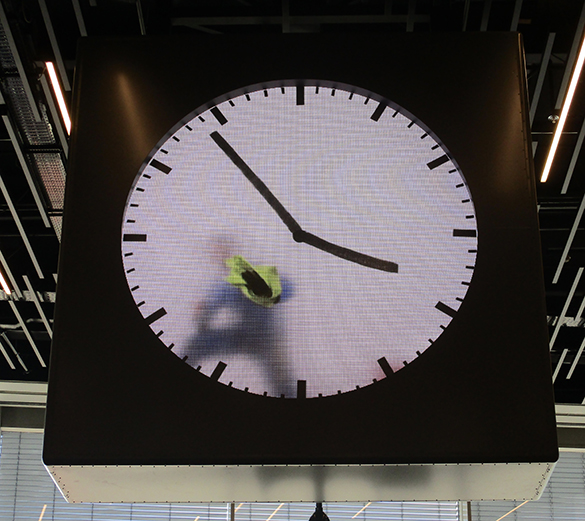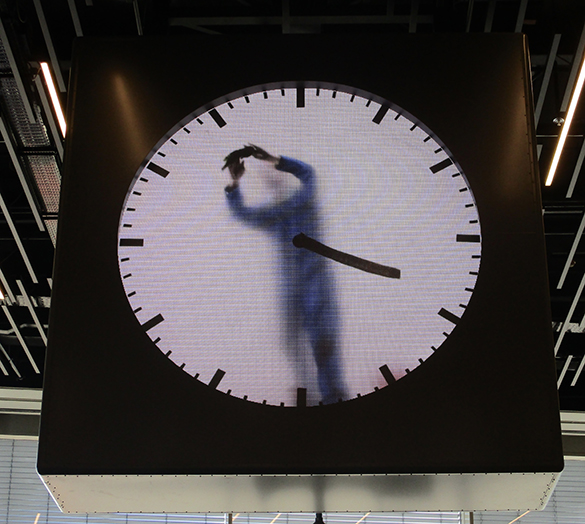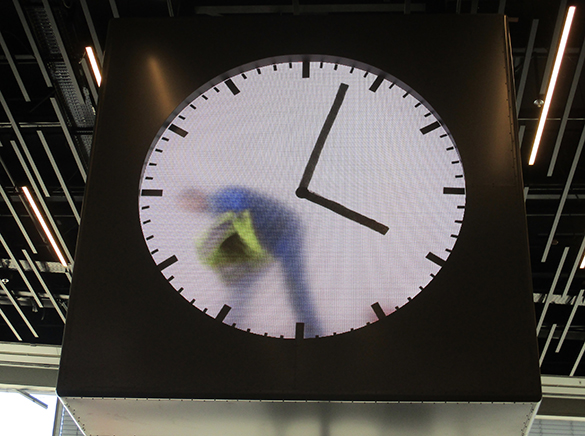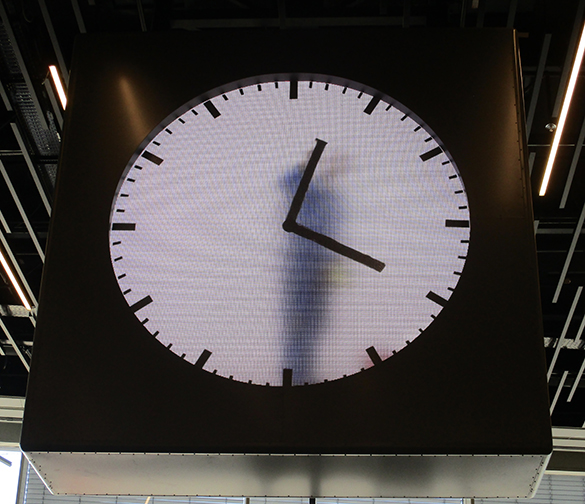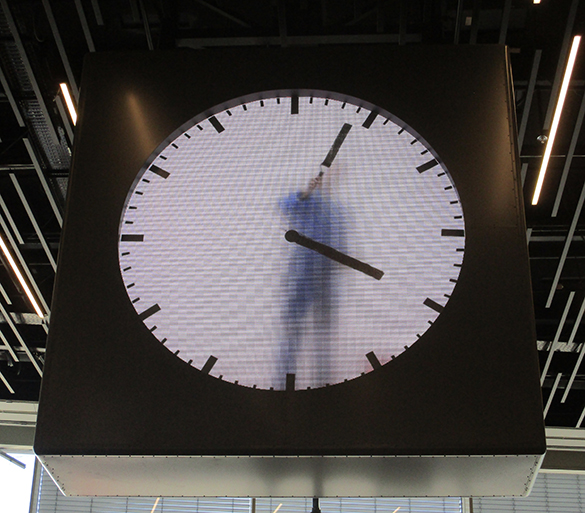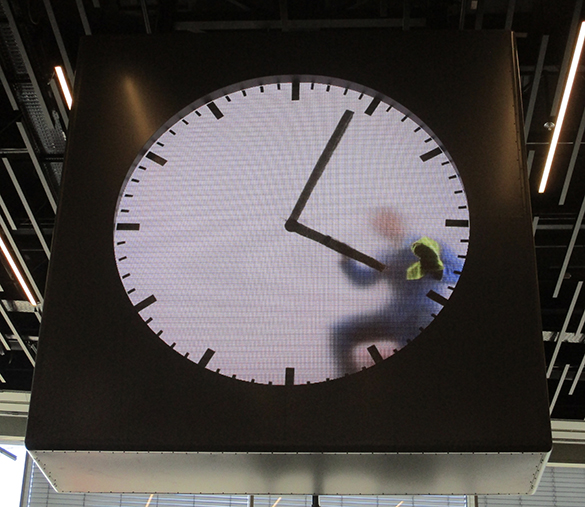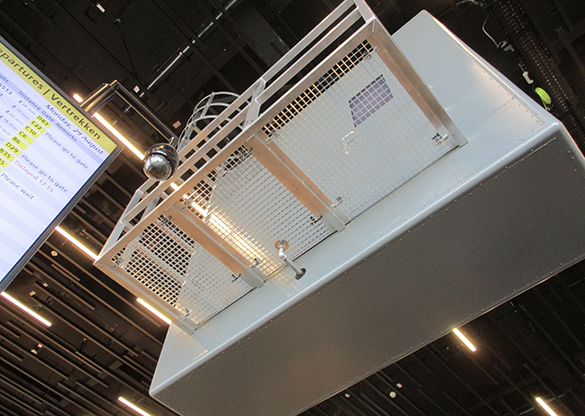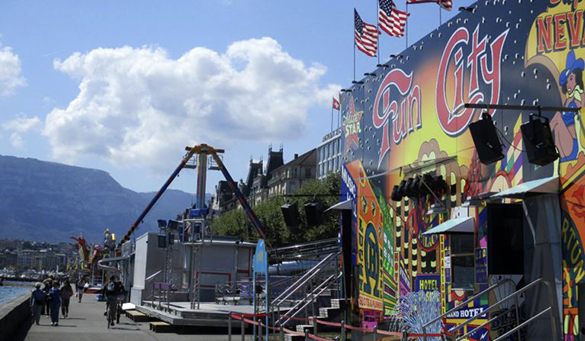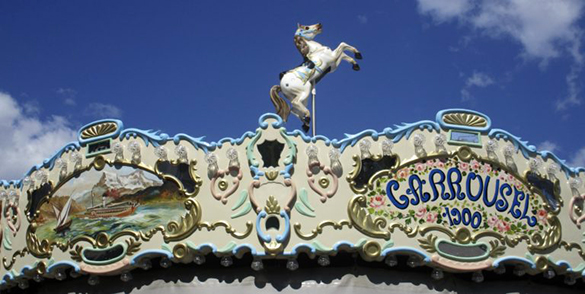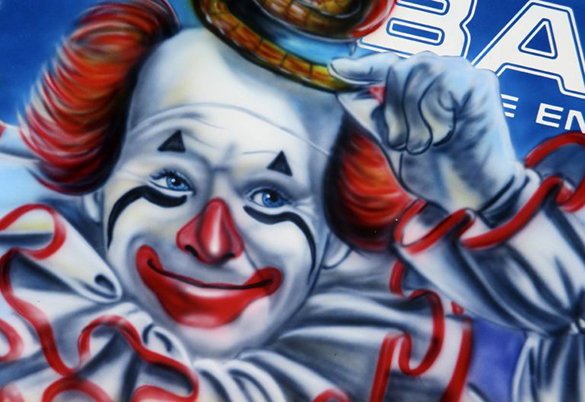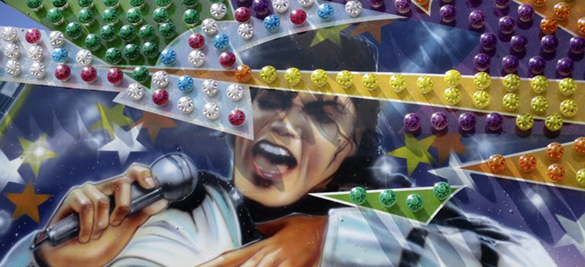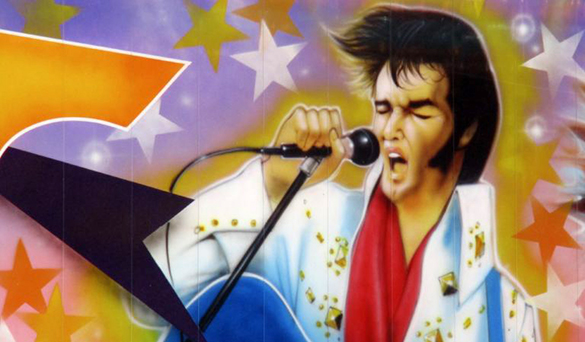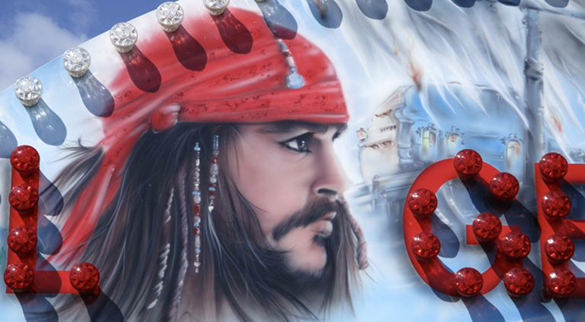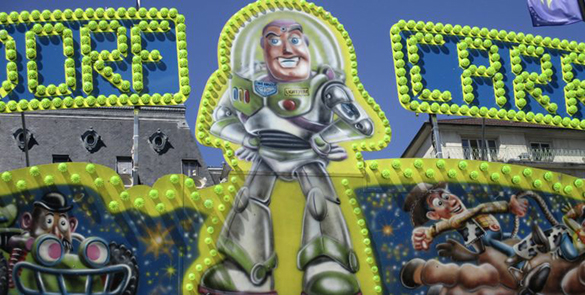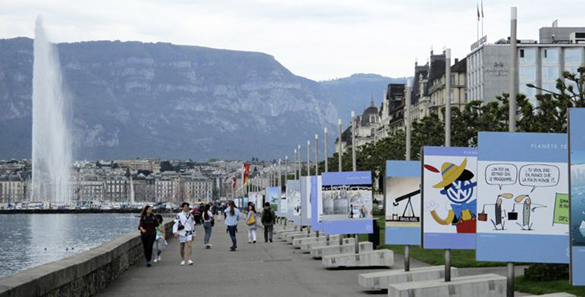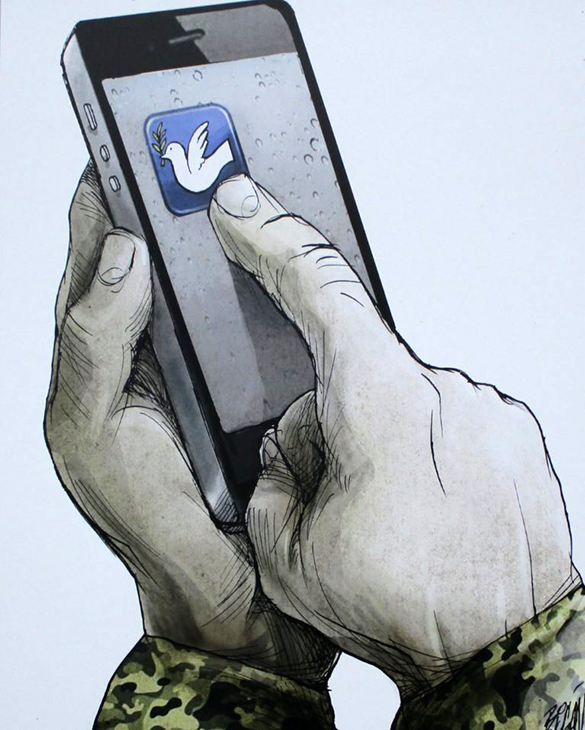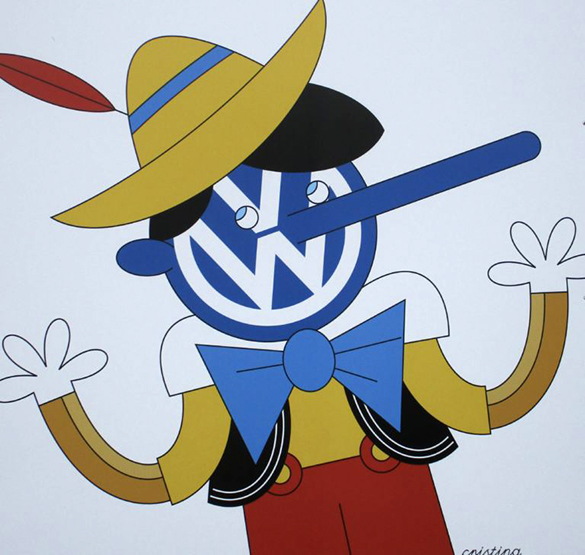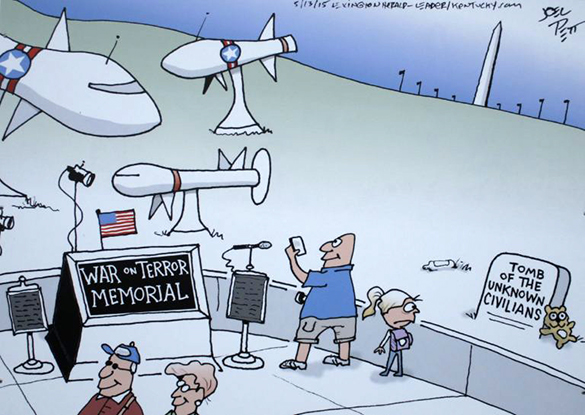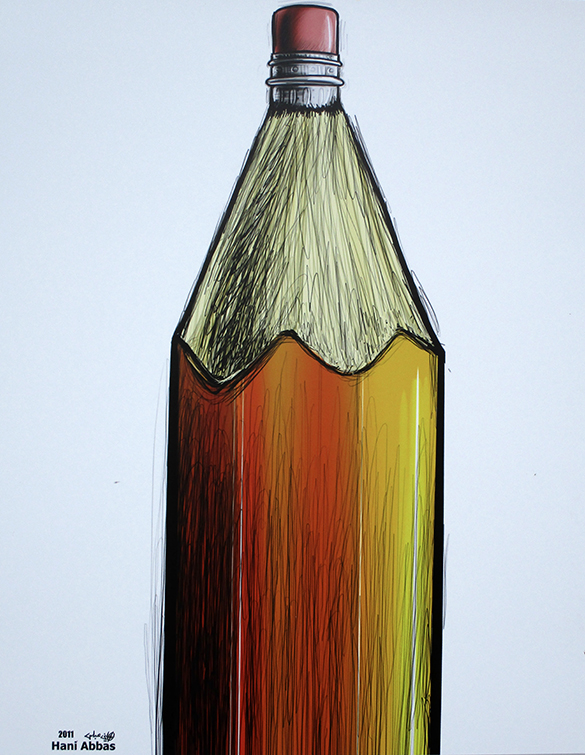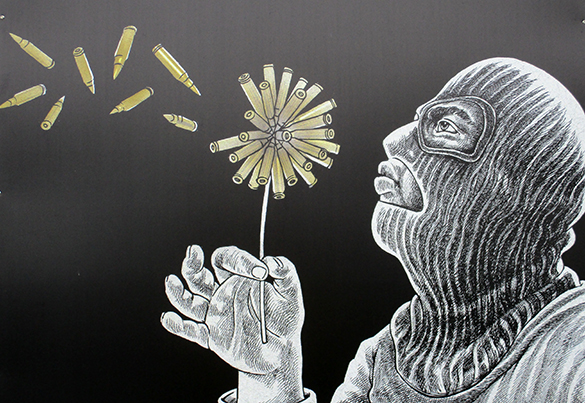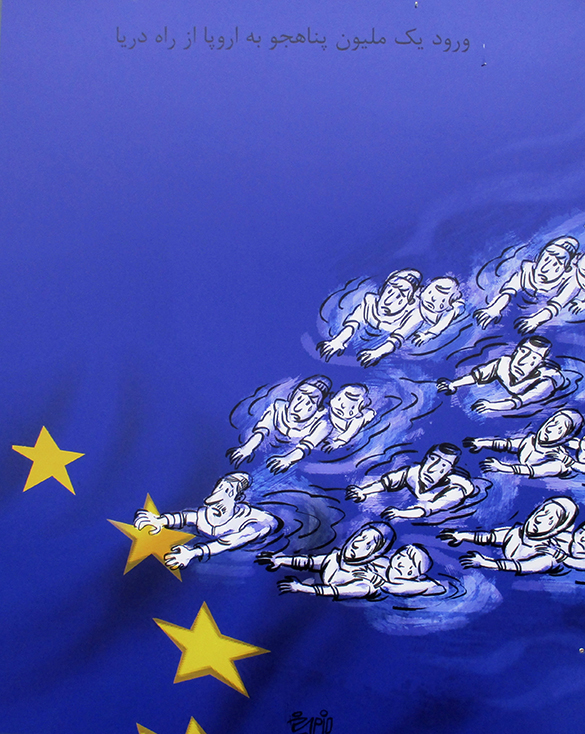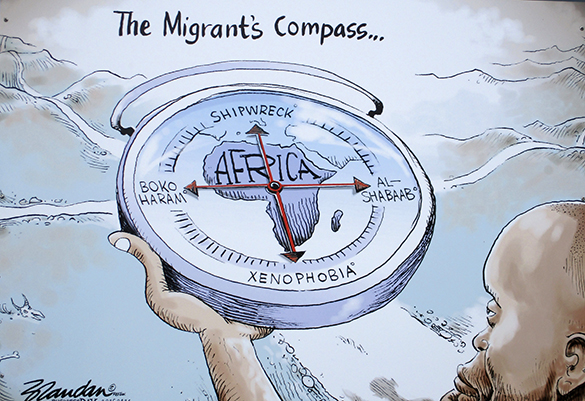I am, once again, in transit at Schiphol airport. It is 3.54 pm. I have a few minutes for a coffee and a snoop about before a connecting flight. There’s always something interesting to discover here like big luggage people.
I see a guy cleaning a big clock suspended from the ceiling. He seems to be wiping the clock-face from the inside. I can’t understand why so many people have their smart phones directed upwards.
He’s obviously taking the job seriously as he’s removed the minute hand to give that frosted glass a good polish! I go to find a coffee.
At 4.03 pm I am striding towards my departure gate and pass the clock again. The guy is still cleaning away. People are still fascinated. He then serves up a surprise!
With a rubber window-cleaning blade, at 4.04 pm, he scrapes off the minute hand …..
….. and repaints it one minute later with a small roller. I grasp what this is about. He has been doing this all along minute by minute. This is a performance in real time. Lordielord! This is brilliant! I am riveted.
Entranced, I watch him wipe away and repaint a slightly advanced hour hand. Inevitably, a series of questions run through my head. Is there someone really inside that box? How does he get in there? Is he an “artist” or an employee? Does he get a break? Is there a change of shift every hour or so?
I am now late for my flight but I have to satisfy my curiosity. I look up at the back of the massive clock. Sure enough, there is a ladder and a door. It seems the guy really is inside. I run grinning like an idiot. My heart sings. I have just witnessed creative genius on a grand public scale. This makes my day.
Later internet research tells me this is the work of Dutch designer Maarten Baas. It is one of his “Real Time” series. For his “performance,” Baas wears a blue overall and uses a red bucket and a yellow cleaning cloth all in solidarity with all those folk who keep the airport spotless.
Inevitably – and with only a little disappointment – I learn that this is a precisely synchronised 12 hour-long video performance projected within a stainless steel box. The ladder and door into the “clock” build an illusion of reality; the viewer is led to imagine the guy descending from a hatch in the ceiling and locking himself into the box to do his job.
I just love how Schiphol goes to such lengths to bring beautiful stuff to travel-weary passengers. Admirable! Fabulous! Thrilling!
Watch the video!

